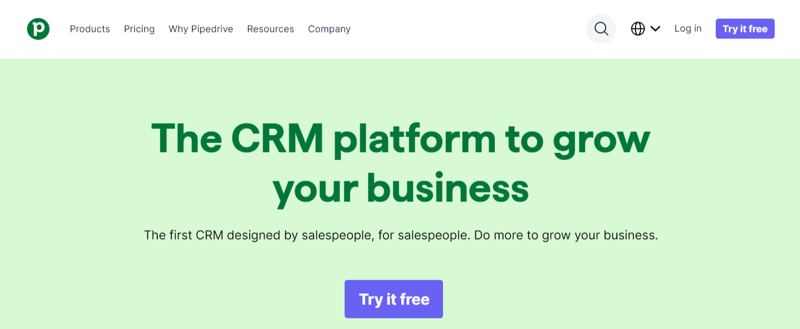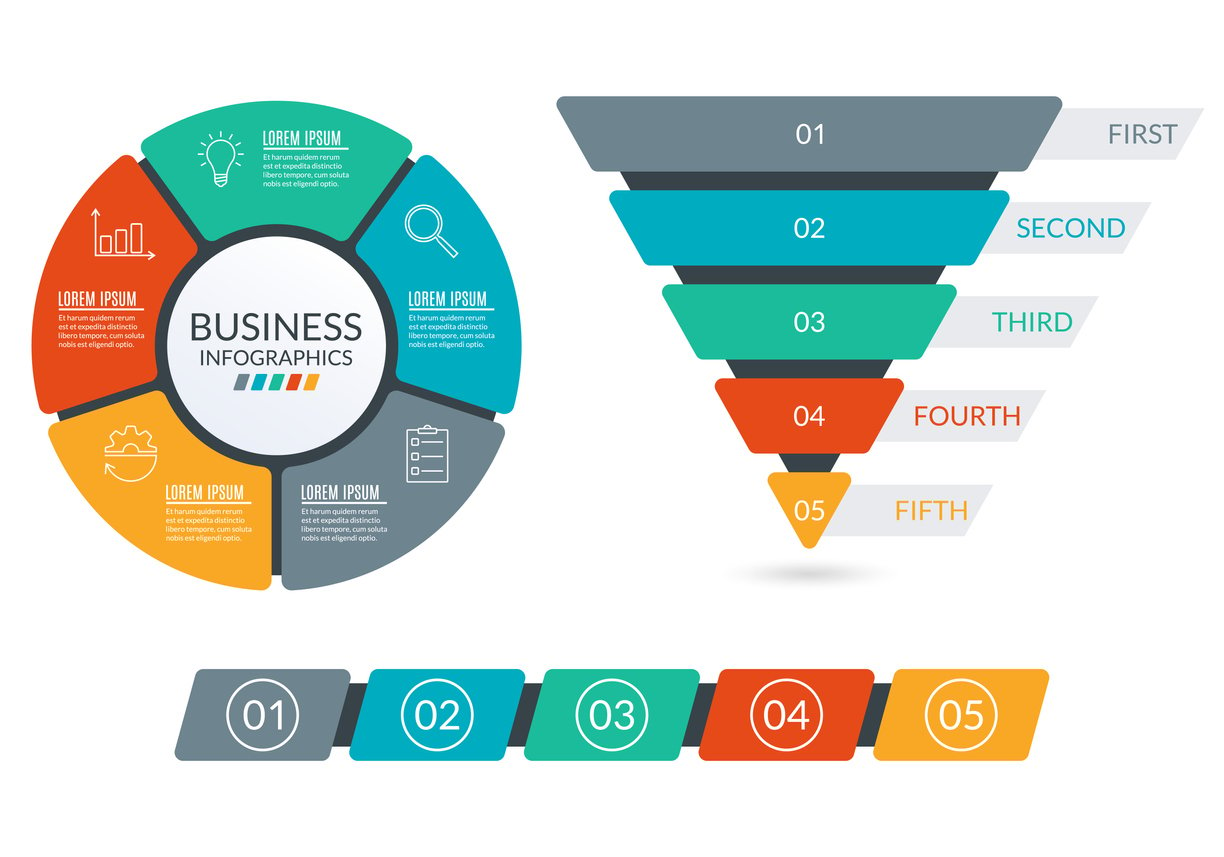
A Guide to Sales Performance Management [Pro Tips Included]
 Updated on
Updated on
By Ringy
Table of Contents
Table of Contents
Sales performance management (SPM) is the secret sauce behind high-performing sales teams. It's not just about tracking sales numbers—it's about optimizing processes, motivating teams, and leveraging data-driven strategies to maximize revenue.
In this guide, we'll break down everything you need to know about SPM, including:
- Introduction to sales performance management
- Top 5 sales performance management systems
- Key considerations when choosing an SPM system
- Ways to improve your sales performance management
- Essential sales performance management tools
- Common concerns about SPM implementation
Whether you're a sales manager aiming to enhance team productivity or a business leader looking for the right SPM system, this guide has you covered.
Let's dive in!
Introduction to Sales Performance Management

Here's the deal with sales performance.
When you envision a salesperson in their groove, the image places them in a meeting or on an important call 10/10 times.
They're selling, right? Or at least trying to.
In reality, less than one-third of a sales rep's day goes to talking with clients.
The rest of their schedule looks like this:
- 21% writing emails
- 17% entering data
- 17% prospecting and researching leads
- 12% in internal meetings
- 12% scheduling calls
And that's forgetting their basic human needs like taking breaks and being a person. But that legwork behind the scenes ensures that a call, when it happens, goes perfectly.
It's very tedious and time-consuming.
Ideally, you would cut some corners here. But, at the very least, you don't want to waste even more time because you don't have a system.
So tracking sales performance and adjusting your efforts should obviously be a high priority if you want to sell more.
And that's exactly what sales performance management does.
A decent sales performance management system takes care of tracking, analyzing, and optimizing sales-related activities by:
- Predicting future trends and patterns
- Helping sales reps build skills
- Optimizing the sales pipeline
- Organizing (and often decreasing) the workload
- Tracking performance-based compensation
- Removing extra steps like manual dialing, organization, etc.
- Eliminating time-devouring tasks so your teams can focus on selling
Sales performance management components
Sales performance management is an extensive, ongoing project. These are the main segments:
- Sales planning
- Sales incentives
- Sales insights
Got that down? Okay, let's move on.
Just kidding. Here's a more coherent component overview:
|
Component |
What it includes |
What it means |
|
1. Sales planning |
|
In this stage, companies take a good look at their competitors, clients (to be), and teams, and plan the most efficient way to reach their goals. |
|
2. Sales incentives |
|
Incentives are all about giving sales teams the tools and drive to get stuff done by aligning the company's goals with their personal motivators. Let's be real: participation is nice, but rewards are nicer. |
|
3. Sales insights |
|
This is where companies see how their current efforts are performing, and what needs to be improved. |
Thankfully, a lot of these tasks are handled by software like CRMs these days to help you keep your sanity and some semblance of control.
But in all seriousness, there's a bunch you can do to improve your sales performance management.
Let's take a look.
Top 5 Sales Performance Management Systems in the Market
*Information is accurate and current as of March 2025.
1. Copper

Copper is a CRM for small to medium-sized businesses who like their G-suite and prioritize the ability to keep using all their regular tools seamlessly.
Integrations are strong with this software.
What's the big deal, you ask? Well, having your Gmail integrated means no more manual data entry. Google Calendar? This means you can schedule meetings without ever leaving the app.
This seems arbitrary, but consider the number of clients you have (and wish to have), and how much time you'd spend tending to each one without this kind of help.
As you know, a minute here and there adds up rapidly in sales.
Copper has an intuitive dashboard and it's fairly simple to use, so you can easily track what's going on with your reps and clients alike. It's great for:
- Easy client data access
- Contact filtering
- Straightforward onboarding
- Task management
- Effortlessly switching between devices
- Logging emails
Plus they send little reminders to check in with prospects so they don't get cold.
However, while they integrate with Gmail and Mailchimp, Copper doesn't have email drip automation. So you'll still have to nurture your prospects yourself.
Overall?
This is a solid sales performance management software option if you're looking to simplify your life, have eyes on all processes, and get some burden off your shoulders.
Pricing: $9-$99 per month, per user, billed annually
Sales tracking: Yes
Reporting: Yes
Support: Yes
2. Ringy

Okay, okay. You got us, this is our software. But we can assure you that it belongs on this list.
Remember how we talked about salespeople spending most of their day not selling? Because they had all that extra draining work to do around client calls like emailing and manual data entry?
Fine, we can't do your prospecting for you. Or participate in company meetings (well, we could ask our support team…).
But Ringy takes the rest of what makes that overwhelming 79% of your average sales day and automates it. And just like that, your client time goes from measly 21% to 71%.
That's over 3x more time every day to pitch-perfect your sales skills!
And yes, with Ringy, that includes personalized SMS and email drip campaigns that nurture your prospects for you.
As you can gather from that supertiny sub-subtitle on the screenshot (or our site), that's because we specialize in automating the crap out of your systems.
And it works like a charm.

But we didn't forget the management part. You need your analytics, real-time reporting, and performance tracking features just as much as automation.
Well, we got ‘em for you.

Pricing: $109 per month
Sales tracking: Yes
Reporting: Yes
Support: Yes
3. Pipedrive

Let's just say that, if for some reason you didn't choose our CRM for your company, we wouldn't be too upset if you got this one.
Pipedrive is really focused on sales. It's got beautiful reporting and sales pipeline visibility that shows you exactly what you need to optimize going forward.
And we love how you can see these guys are constantly trying to improve their service as they have frequent rounds of updates happening.
It can get a little glitchy sometimes because of it, sure.
But their continuous efforts show that they're a future-focused company that you can expect to grow alongside your business, and that kind of long-term thinking is definitely a good sign.
Their customer training and support are amazing, too.
The app is complex but there is help to be had to get you up and running in a matter of days.
Just one thing to keep in mind with Pipedrive: while the emphasis on sales is great, marketing doesn't go hand-in-hand so you'd have to rely on another tool for that.
Pricing: $14-$99 per month, per seat, billed annually
Sales tracking: Yes
Reporting: Yes
Support: Yes
4. Varicent

Varicent is a comprehensive sales performance management platform that assists sales teams in managing incentives, tracking performance, and planning quotas.
It automates commission payouts, reducing errors and saving time. The platform's analytics tools help managers spot trends and adjust strategies accordingly. With territory management features, teams can assign representatives to the right regions for better coverage.
Key Features:
- Automates and accurately calculates commissions.
- Provides insights into sales trends and individual performance.
- Assists in setting and managing sales targets.
- Optimizes sales coverage by assigning reps to appropriate regions.
Pricing: Available upon request
Sales Tracking: Yes
Reporting: Yes
Support: Yes
5. Weflow

Weflow is a sales performance management tool that provides full visibility into a sales team's pipeline and the current status of deals. It simplifies adherence to sales processes and methodologies, enhancing discovery, qualification, and handover procedures.
Weflow offers a range of features designed to improve sales productivity and streamline performance management.
Key Features:
- Offers a clear view of ongoing deals and their stages.
- Ensures compliance with established sales methodologies.
- Enhances efficiency through various sales-focused features.
Pricing: Starts at $30/user/month (billed annually)
Sales Tracking: Yes
Reporting: Yes
Support: Yes
5 Key Considerations When Choosing a Sales Performance Management System
Because, obviously, you shouldn't just close your eyes and choose whatever option you pointed at first.
Your poor cat simply can't do that type of work for you.

Before you make a choice, pay attention to these details:
- Contact and lead management
- Client interaction tracking
- Mobile support
- Sales automation
- Customer support
Now let's talk about why.
1. Contact and Lead Management
How many leads is each rep responsible for? And how much work do they need to put in just to enter all the info in the right slots to refer to later?
The job is never done.
New prospects keep coming in (which is good!), so logging the data and having a clear overview of who's who should be automatic.
Smart software can pull this from your contacts or email and categorize your leads so you can focus on communication.
2. Client Interaction Tracking
This is such a huge deal for sales performance, let alone sales performance management.
Your reps go through hundreds of calls in a short time span. And no matter how hard they try, it's impossible for them to remember every tiny detail about every client they talk to.
So what happens? Too often, it's one of these scenarios:
- They can't find important client data to save their life
- They aren't sure how the previous call ended
- They tried to curb 1 and 2 by taking notes, but who knows where they ended up
This is why client interaction tracking done in a CRM is better: reps can take smarter notes while on the call knowing they'll easily find them right where they left them.
Paired with call recording, this is a big must for sales performance management. You get to objectively see how each convo goes down and learn what needs to improve.
3. Mobile Support

When we said real-time, we weren't kidding.
You need to be able to access your analytics at all times, from anywhere, and mobile is the only way to ensure that.
What good is a sophisticated reporting tool if you can't see the report because you're stuck in traffic? Or working from home?
Or worse: what if your clients call and your reps aren't available?
Well, statistically, they will move on to your competitor who is ready for them.
Mobile CRM access allows you to stay in control and helps your teams avoid missed opportunities no matter where they work from.
4. Sales and Marketing Automation
Hold up. You're here to improve your performance, not just learn how to see it better, right?
Good. Automation is a sure way to save some time and eliminate the possibility of human error on repetitive admin tasks.
Every CRM will have some level of sales automation to reflect that.
However, the best software will combine that with marketing automation via SMS and email drip campaigns to give you maximum return on investment.
Just imagine: you're prospecting and closing deals, and your robot friend is nurturing lukewarm leads in the middle until they're ready to say yes.
But that sounds risky… How does it even work?
Two words: drip CRM.
Basically, with a CRM like Ringy, you get to schedule personalized messages ahead of time based on previous client interactions and literally forget about it until you're needed to close the deal.
Sweet feature, we know. 😉
5. Customer Support
We'll forever keep talking about the significance of customer support. Because it's tech we're dealing with here and of course something will eventually go wrong.
What then?
Think about your needs here. Are you cool with having to wait a couple of days to get an answer from your provider? Or is 24/7 support the only way to go?
Decide before you subscribe to anything. It could save you a mental breakdown or two down the road.
5 Ways to Improve Your Sales Performance Management

Elevating your SPM requires crafting a strategy that empowers your team, streamlines processes, and drives revenue. Let's explore five actionable strategies to enhance your SPM approach.
1. Setting Clear Sales Goals and Kpis
Imagine going on a road trip without a destination—sounds chaotic, right? The same applies to sales. Establishing clear, specific, and achievable goals provides your team with direction and purpose. Utilize the SMART criteria to define objectives that are Specific, Measurable, Achievable, Relevant, and Time-bound.
Example Goals:
- Increase quarterly sales by 15%.
- Improve customer retention rates by 10%.
By clearly communicating these goals and aligning them with individual Key Performance Indicators (KPIs), you ensure that each team member understands their role in the broader mission. Regular check-ins using sales tracking software can help monitor progress and keep everyone on track.
2. Implementing Real-Time Performance Tracking
In sales, waiting until the end of the quarter to assess performance is like trying to steer a ship by looking at its wake. Real-time performance tracking allows you to monitor key metrics as they happen, enabling swift adjustments to strategies and tactics.
Benefits:
- Immediate identification of underperforming areas.
- Quick recognition and reinforcement of successful behaviors.
Utilizing sales performance management software with real-time analytics provides a dynamic view of your team's activities, helping you stay agile and responsive in a competitive market.
3. Utilizing Incentives and Commission Structures Effectively
Money talks, but a well-structured incentive program sings. Implementing effective commission structures can motivate your sales team to exceed targets and drive business growth.
According to a survey by the Alexander Group, 28% of companies are integrating incentive pay for various roles outside traditional sales positions.
Tips for Effective Incentives:
|
Aspect |
Description |
|
Clarity |
Ensure that the criteria for earning bonuses are transparent and achievable. |
|
Fairness |
Align incentives with individual roles and responsibilities. |
|
Balance |
Combine base salaries with performance-based bonuses to provide stability and motivation. |
Remember, while incentives can boost performance, they should be part of a broader strategy that includes support and development opportunities.
4. Enhancing Coaching and Training Programs

Even the most talented salespeople need continuous development to stay at the top of their game. Investing in regular coaching and training programs ensures your team is equipped with the latest skills and knowledge. Companies that invest in sales training achieve 50% higher net sales per employee than those that do not.
Strategies:
- Personalized Coaching: Tailor sessions to address individual strengths and areas for improvement.
- Ongoing Training: Provide regular workshops and seminars on emerging trends and techniques.
- Mentorship Programs: Pair less experienced reps with seasoned mentors for guidance and support.
A culture of continuous learning not only enhances performance but also boosts employee engagement and retention.
5. Leveraging Automation for Efficiency
Let's face it—manual data entry and administrative tasks can be soul-crushing. Using automation through sales performance management systems can free your team from these time-consuming chores, allowing them to focus on what they do best: selling.
Automation Benefits:
- Efficiency: Streamline processes like lead tracking, follow-ups, and reporting.
- Accuracy: Reduce human error in data entry and calculations.
- Insights: Gain valuable analytics to inform decision-making.
Implementing the right sales performance management software can transform your operations, making your team more productive and your strategies more effective.
By integrating these strategies into your sales performance management approach, you'll create a robust framework that supports your team's success and drives your business toward its goals.
Essential Sales Performance Management Tools
In the quest for sales supremacy, arming yourself with the right tools is akin to a knight wielding a legendary sword. These essential sales performance management tools not only streamline processes but also turbocharge your team's productivity.
Let's look into the arsenal:
Sales Performance Management Software – Features and Benefits
Think of sales performance management software as the command center of your sales operations. This digital maestro orchestrates various facets, ensuring harmony and efficiency. Key features include:
- Quota Management: Set, adjust, and monitor sales targets with precision, ensuring alignment with overarching business objectives.
- Territory Management: Allocate and optimize sales territories to maximize coverage and minimize overlaps, leading to fair competition and increased revenue.
- Incentive Compensation: Automate complex commission structures, ensuring timely and accurate payouts that keep your salesforce motivated.
The benefits? Enhanced accuracy, reduced administrative burdens, and a motivated team that's laser-focused on smashing targets.
Sales Tracking Systems – Monitoring Progress and Optimizing Sales Processes
Ever tried navigating without a map? Neither should your sales team. Sales tracking systems provide real-time insights into sales activities, offering a clear view of the pipeline and individual performances.
By monitoring metrics like lead conversion rates and sales cycle lengths, these systems highlight bottlenecks and opportunities for process optimization. The result? A well-oiled sales machine that operates at peak efficiency.
Reporting & Analytics Tools – Data-Driven Decision-Making for Sales Success
In the age of information, guessing is passé. Reporting and analytics tools transform raw data into actionable insights, enabling data-driven decisions that propel sales success.
From forecasting future sales to identifying top-performing products, these tools are the crystal ball every sales manager needs.
Gamification & Incentive Programs – Driving Motivation and Engagement
Who says work can't be fun? Gamification introduces game-like elements into sales processes, transforming mundane tasks into exciting challenges. Leaderboards, badges, and rewards ignite healthy competition, fostering a culture of continuous improvement.
According to Compass, "gamification incentives make business performance more engaging by using real-time rewards, leaderboards, and interactive challenges."
Common Concerns About SPM Implementation
Implementing a sales performance management system can significantly enhance your sales team's effectiveness. However, it's natural to encounter questions and challenges during the process.
Let's address some common concerns to ensure a smooth and successful SPM implementation.
How to Measure the Success of Your SPM Strategy
Evaluating the effectiveness of your SPM strategy is crucial to understand its impact and identify areas for improvement. Success can be measured through various metrics, including:
- Achievement of Sales Targets: Assess whether your team is meeting or exceeding the sales goals established prior to SPM implementation.
- Improved Sales Efficiency: Monitor changes in sales cycle length and the time sales representatives spend on administrative tasks versus selling.
- Enhanced Forecast Accuracy: Evaluate the precision of sales forecasts before and after SPM adoption to determine improvements in planning and resource allocation.
- Employee Satisfaction and Retention: Gather feedback from your sales team regarding their satisfaction with the new system and observe any changes in turnover rates.
By regularly analyzing these factors, you can gauge the effectiveness of your SPM strategy and make informed adjustments as needed.
Troubleshooting and Optimization Tips
Even with a well-planned implementation, challenges may arise. Here are some tips to troubleshoot and optimize your SPM system:
- Identify Performance Gaps: Utilize your SPM system's analytics to pinpoint areas where sales performance is lacking and investigate underlying causes.
- Provide Targeted Training: Address identified weaknesses by offering training programs tailored to the specific needs of your sales team.
- Refine Incentive Structures: Ensure that your compensation plans are motivating desired behaviors and adjust them if they are not yielding the expected results.
- Seek User Feedback: Regularly collect input from your sales team regarding the system's usability and effectiveness, and use this information to make user-centric improvements.
By proactively addressing these areas, you can enhance the performance and satisfaction of your sales team, leading to better overall results.
Conclusion

Sales performance management is one of those things you wanna get on while it seems simple. And it can go from simple to a nightmare before you finish that family dinner.
Trust us.
As your business grows, you'll need your systems to run smoothly so they don't end up holding you back. Not to mention propelling you further.
But solid sales performance management software will do both.
Now that you know which options are out there and how to figure out which one fits, there's nothing left but to get one.
Book a demo to take Ringy for a spin.

Skyrocket your sales with the CRM that does it all.
Calling? Check. SMS? Check. Automation and AI? Check. Effortlessly keep in touch with your customers and boost your revenue without limits.

Take your sales to new heights with Ringy.
Sales in a slump? Ringy gives you the tools and flexibility you need to capture leads, engage with them, and turn them into customers.
Subscribe to Our Blog
Enter your email to get the latest updates sent straight to your inbox!
Categories
Related Articles



























































































